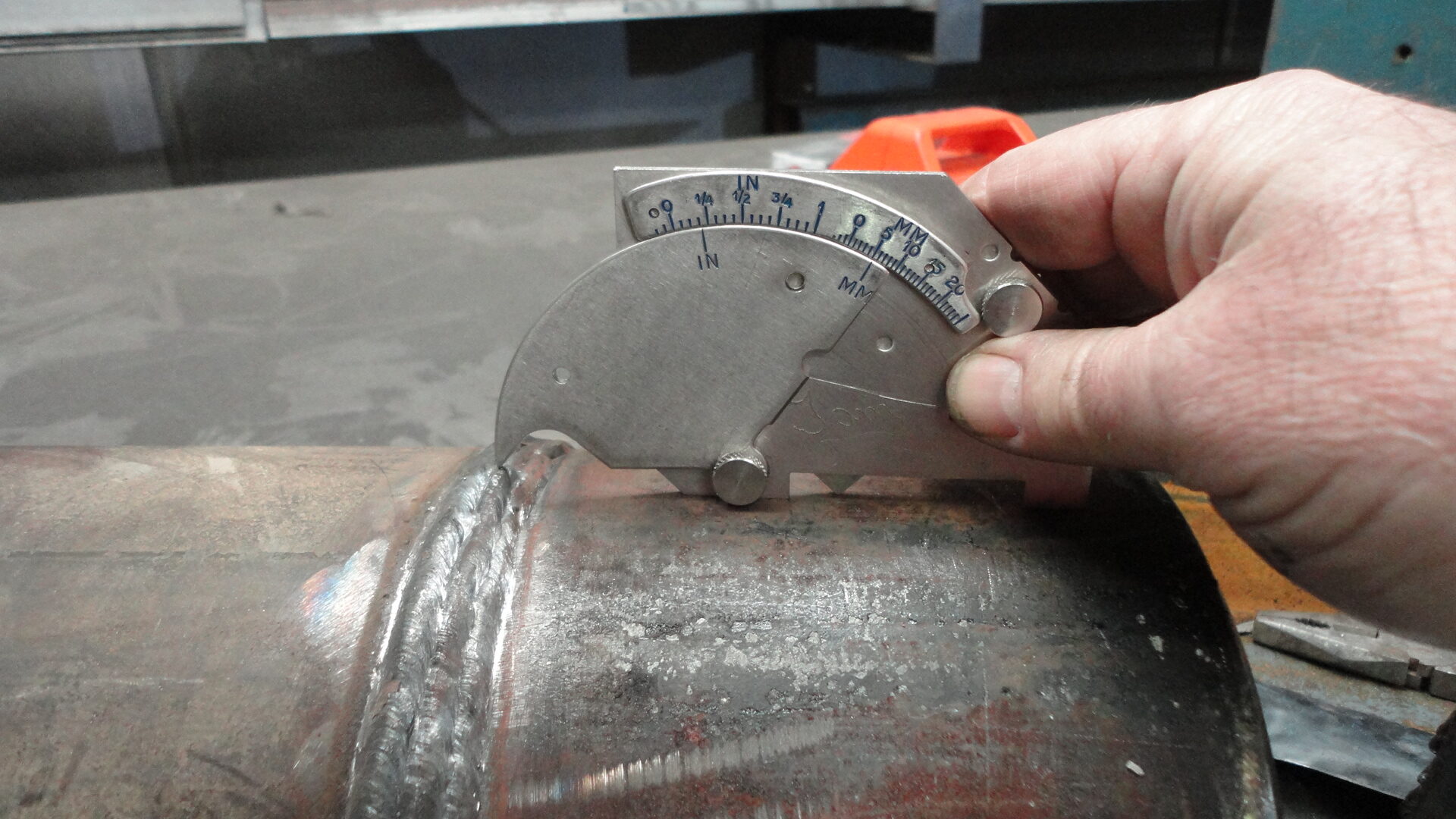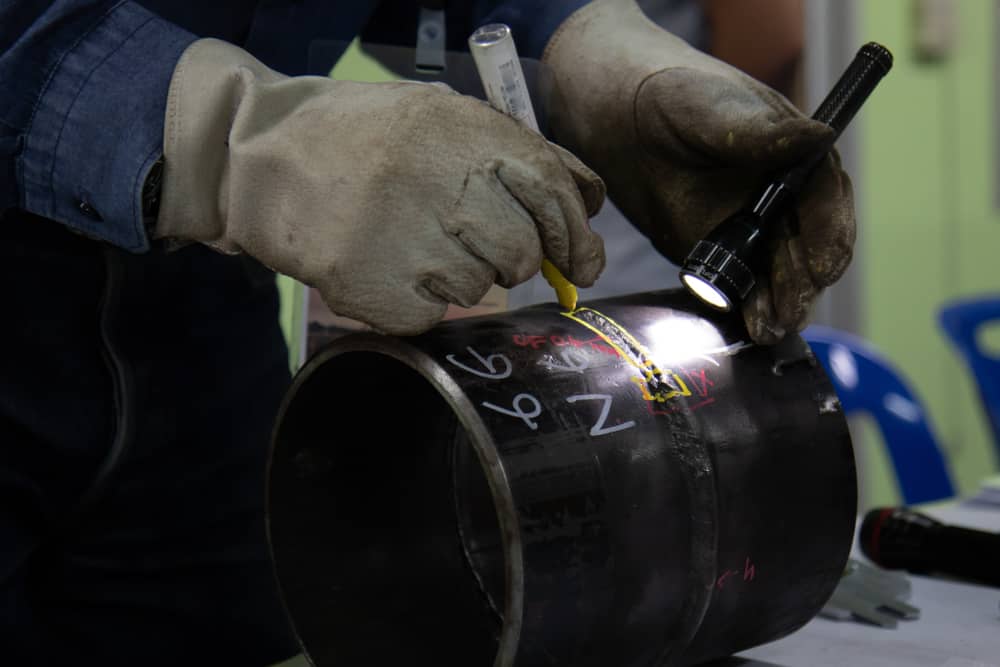The Value of Routine Welding Inspection Milwaukee for Conformity
Wiki Article
Trick Aspects to Think About in Welding Evaluation for Quality Control
Welding examination is an important aspect of high quality assurance that includes different elements essential for making certain the stability of bonded frameworks. The interplay of these elements elevates additionally inquiries concerning exactly how they can be maximized to boost total welding high quality.Kinds Of Welding Processes
Welding processes encompass a range of strategies made use of to sign up with materials, mostly metals, with the application of heat, stress, or both. The most common kinds of welding procedures consist of arc welding, gas welding, resistance welding, and solid-state welding.Arc welding, which includes approaches like Shielded Steel Arc Welding (SMAW) and Gas Tungsten Arc Welding (GTAW), employs an electric arc to create warm for thawing the base steels and filler products. Gas welding, commonly described as oxy-fuel welding, makes use of a fire created by shedding a fuel gas with oxygen to thaw the metals.
Resistance welding, consisting of area and seam welding, depends on the warmth created from electric resistance to bond products, commonly utilized in auto manufacturing. Solid-state welding procedures, such as rubbing welding and ultrasonic welding, sign up with products without thawing them, utilizing mechanical pressure and frictional warmth.
Each welding process has details applications, toughness, and restrictions, making the choice of the proper method critical for attaining desired weld top quality and efficiency. Welding Inspection Milwaukee. Recognizing these procedures is important for guaranteeing reliable welding practices and sustaining high quality guarantee in construction and production markets
Examination Techniques and Tools
To make certain the stability and integrity of bonded joints, various examination techniques and tools are employed throughout the welding procedure. These methods can be extensively classified into non-destructive testing (NDT) and damaging testing (DT) approaches. NDT techniques, which do not jeopardize the honesty of the bonded element, consist of visual evaluation, ultrasonic screening, radiographic testing, magnetic bit testing, and liquid penetrant testing.Aesthetic examination is one of the most essential strategy, enabling for the instant identification of surface problems. Ultrasonic screening utilizes high-frequency acoustic waves to discover interior flaws, while radiographic screening uses X-rays or gamma rays to picture the interior framework of welds. Magnetic fragment screening works for finding surface and near-surface suspensions in ferromagnetic products, and liquid penetrant testing exposes surface-breaking problems by using a colored color or fluorescent penetrant.
On the other hand, devastating testing includes physically examining the bonded joint until failure to analyze its mechanical homes. Devices such as tensile screening devices, impact testers, and solidity testers are normally made use of in this context. By employing a combination of these methods and devices, assessors can ensure the top quality and security of welded structures.

Significance of Documents
In the world of welding assessment, proper documentation functions as a vital foundation for quality control and regulatory conformity. Documentation includes a variety of records, including weld procedure specifications, evaluation records, and non-destructive testing results. These records not only offer a chronological account of the inspection procedure but likewise work as have a peek at this site a recommendation for future evaluations and audits.Precise documentation makes sure that all welding activities are traceable and proven, facilitating adherence to appropriate sector standards and codes. It comes to be important throughout the testimonial process, enabling stakeholders to evaluate compliance with requirements and identify any type of flaws or inconsistencies. Furthermore, detailed documents sustain effective communication amongst employee and external auditors, fostering a society of openness and liability.
Furthermore, well-maintained documentation can considerably minimize the threat of pricey rework or failings. By making certain that all necessary information is recorded and available, organizations can improve their high quality assurance processes, eventually improving the stability of the welded structures. For that reason, investing time and resources right into developing durable paperwork methods is not simply a procedural requirement but a strategic vital for accomplishing long-lasting success in welding operations.
Worker Certifications and Training
How can companies make sure the competency of their welding employees? To keep high criteria of quality control, it is essential for companies to invest in comprehensive training programs customized to the particular requirements of the welding sector. Welding Inspection Milwaukee. This includes not just initial training yet also continual education to keep workers abreast of evolving methodologies and innovationsOrganizations should develop clear criteria for employees qualifications, consisting of relevant certifications and experience in different welding methods. Employing certified welding assessors (CWIs) can enhance the top quality of assessments, as these specialists have the necessary experience to determine possible defects and make sure adherence to finest techniques.
Along with technical skills, companies need to foster a culture of safety and security and conformity among their welding workers. Supplying normal workshops and refresher programs can help strengthen the value of safety and security protocols and the ramifications of non-compliance.
view it Moreover, companies should implement performance examinations and comments devices to analyze personnel competency in time. By systematically attending to training requirements and advertising a dedication to top quality, companies can boost their welding examination procedures, inevitably bring about boosted item honesty and consumer satisfaction.
Conformity With Sector Requirements
Following sector criteria is vital for making sure the high quality and security of welding operations. Compliance with established criteria, such as those established by the American Welding Culture (AWS), American National Specification Institute (ANSI), and International Organization for Standardization (ISO), offers a framework for analyzing the integrity of bonded frameworks. These requirements encompass numerous facets of welding, including material option, style specifications, and step-by-step techniques.Welding examinations must be carried out based on these requirements to validate that the job fulfills the necessary high quality criteria. This includes aesthetic inspections, non-destructive testing (NDT), and complete documentation of searchings for. Ensuring compliance not only improves the dependability of the welds however additionally alleviates threats connected with structural failings.
Furthermore, adherence to industry criteria cultivates a society of safety and professionalism and reliability within the workforce. It establishes a benchmark for efficiency and motivates constant renovation through routine audits and training. Ultimately, conformity is not simply a regulative need; it is a commitment to excellence that safeguards both employees and the atmosphere while supplying high-grade welding items.

Conclusion

Welding assessment is a crucial facet of quality assurance that encompasses various aspects important for making sure the integrity of welded frameworks.To ensure the honesty and integrity of bonded joints, various evaluation strategies and devices are utilized throughout the welding procedure.In the realm of welding assessment, correct documentation offers as a critical foundation for high quality assurance and regulatory conformity.Welding assessments have to be performed in conformity with these criteria to confirm that the job meets the needed quality criteria.In conclusion, reliable welding examination for high quality assurance calls for a diverse method that incorporates the option of appropriate examination methods, strict adherence to industry standards, and detailed documentation of outcomes.
Report this wiki page